Chapter Six Defining Pain or Critical Business Issue
Six Defining Pain or Critical Business Issue
Overview
You are engaged in the initial sales call with a new prospect (it could be face-to-face, on the phone, or electronic). What should you say, and when should you say it? What is your goal for this first meeting, and what is the best strategy for reaching this goal?
In this chapter we go through the initial steps of a sales call. The goal is to establish the prospect’s pain, or critical business issue. This is essential before the sale can proceed. The prospect’s pain is central to everything that follows, because, without a compelling reason to change, the prospect will continue to do things the same way. Remember the foundational principle of Solution Selling: No pain, no change. To help you reach this goal, you will need to establish rapport, introduce the call, and tell a third-party Reference Story designed to get pain admitted.
It’s interesting to see salespeople’s reactions to a structured sales call model. When we first start working with salespeople, they usually think they don’t need a structured sales call. Many of them go so far as to say, “I don’t want information on how to make a sales call. I’m good enough already. It’s like being put into a straitjacket.” However, after they’ve seen the Solution Selling sales call model, most of them have a change of heart. They realize that they can make improvements in their own approach, even though they’ve been selling for a long time.
I’ve learned that many salespeople are unprepared for what I call normal buyer responses in a sales situation. If you’ve failed to anticipate the buyer’s reactions, then you’re out of alignment with the buyer. For every action on your part, you should anticipate all possible reactions from the buyer. It’s possible to lose a sale in the early stages of a sales call. If the buyer concludes that you’re insincere, incompetent, or just another salesperson trying to sell something he or she doesn’t need, things are not going to go well. Since the buyer’s first decision is whether or not to listen to you, building personal credibility and establishing rapport at this early stage is essential.
What would compel a buyer to be willing to reveal sensitive information about his or her company to a stranger? Solution Selling’s research indicates the buyer is willing when the salesperson has accomplished the following:
- Established credibility
- Built rapport
- Established trust, sincerity, and competency
- Demonstrated situational knowledge
Prospects are willing to discuss their problems when they conclude that the salesperson is trustworthy and has the knowledge and capability to help them. Each step in the initial sales call is designed to establish your credibility.
In Solution Selling, we do not believe in or teach any type of sales trickery or strong-arm techniques. We don’t believe salespeople should pretend to be something they’re not. Salespeople should work on being themselves. In an initial sales call, the safest course of action is to start talking about the business purpose of your call. That’s the reason you want to speak with them in the first place. The business discussion will establish rapport. By showing buyers that you understand their business, you will earn their respect. Establishing rapport takes time; don’t rush it.
We’ve developed two job aids to help salespeople maintain alignment with the prospective buyer: the Strategic Alignment Framework and the Strategic Alignment Prompter. The Framework shows an overview of the steps involved in a first meeting, laying out each selling step. The Prompter tells salespeople what to say that leads them through these steps. We’ve adjusted these words over the years, and they have proven to be successful, but you should modify them to meet your style and situation.
STRATEGIC ALIGNMENT FRAMEWORK
There are seven steps in the Strategic Alignment Framework. In this chapter, I describe Steps 1 through 3; Steps 4 through 7 are covered in subsequent chapters. Not all sales situations require all seven steps. However, Solution Selling built the model knowing that you can always omit steps, depending on your industry or sales situation. For example, if you have short sales cycles or you sell over the phone, you probably won’t need to use all seven steps.
Alignment with buyers is a key skill in Solution Selling. Without it, sales usually collapse. We developed the Framework to assist salespeople in maintaining proper alignment with the buyer. The Framework shown in Figure 6.1 reveals the salesperson’s seven steps of the first call aligned with the buyer’s perspective and decision process. As we proceed through the book, I discuss dialogue that our salesperson, Bill Hart, could have with the key players at Titan Games.
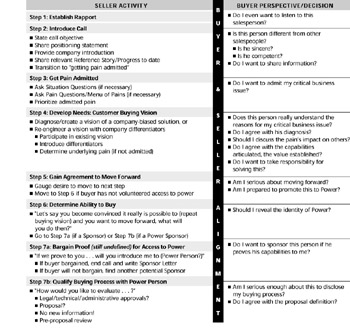
Figure 6.1: Strategic Alignment Framework
The Buyer s Perspective
The Strategic Alignment Framework aligns the salesperson’s activities to the buyer’s perspective and decisions. In other words, the salesperson’s actions are designed to match the way buyers buy.
How important is the buyer’s perspective? You know the answer to this question—very important. Why don’t salespeople consider the buyer’s perspective more than they do? Buyers have decisions to make and therefore options to consider. While you’re talking, they’re thinking: Do I want to listen to this salesperson? Is this person different from other salespeople? Is this person sincere? Is this person competent? Can I trust this person? Do I want to share information with this person?
So that you can easily understand the Strategic Alignment Framework and use the Strategic Alignment Prompter, I’ll break down each step and describe both the salesperson’s action and the buyer’s perspective.
STRATEGIC ALIGNMENT PROMPTER
We’re not trying to create robotic salespeople. What I’m about to walk you through is a dialogue prompter for a suggested conversation. Note that this assumes a North American business environment, the buyer has shown curiosity and wants to talk, and this is a first-call scenario. Other business cultures may require modifications to this Prompter.
Step 1 Establish Rapport
The goal of the first step is to establish rapport with the buyer. To accomplish this, the buyer must first be willing to spend time with the salesperson and listen to what he or she has to say. This is illustrated in Figure 6.2.

Figure 6.2: Step 1, Establish Rapport
In Step 1, you want the buyer to set the tone of the meeting or the exchange if it’s taking place over the phone. The short pause or silence after introducing yourself gives the buyer the opportunity to say something. What comes out of the buyer’s mouth will usually tell you something about the buyer and what the proper tone of the meeting should be. If you don’t understand the local culture and its business practices, you could get into trouble and kill your sales opportunity early. I find the safest approach is to state the business purpose of your meeting or call. In most cases, this approach won’t offend buyers anywhere in the world you’re doing business.
Step 2 Introduce Call
Step 2 builds your credibility and sets the stage for encouraging the buyer to share information with you. The logic behind this step is give to get. Ultimately, if you want buyers to open up and share information about themselves or their situation, you have to offer them something first. Let’s explore each element in Step 2.
State the Call Objective. Too many salespeople skip the step of stating the objective of the meeting. Over and over I hear salespeople begin a first-time sales call with selling—pitching their products and services. Buyers instantly push back, disengage, and put some space between themselves and the salesperson. It’s too early to start selling. Instead, calmly let your buyer know the objective of your call and get his or her approval.
See Figure 6.3 for a suggested way to introduce yourself and your objective. This introduction lets the buyer know that you want to cover several topics: introduce your own company, share your experiences with other buyers and companies similar to his own, and learn more about the buyer and his company. After this exchange of information, the two of you can then make a mutual decision about whether it’s useful to go further; no deception, no trickery, just good business. I believe that every meeting (even with a customer you’ve done business with for years) should have a stated objective.
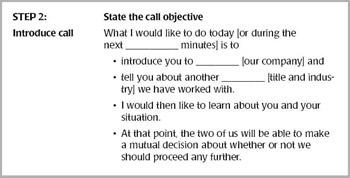
Figure 6.3: Step 2, Introduce Call: Call Objective
Position Your Company. Figure 6.4 addresses the positioning of your company, which is important because we want buyers to open up and share information.
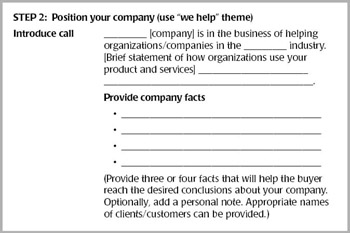
Figure 6.4: Step 2, Introduce Call: Positioning Statement and Company Introduction
I suggest that you use the “we help” theme if it’s applicable and appropriate. Remember, the customer is the focal point, and it’s much easier if the customer perceives you and your company as being sincere and competent. The words you use may be similar to those in Figure 6.4, or you may want to use the words from your company’s mission statement.
For example, if I were positioning my own company, it would sound something like this: “Sales Performance International is in the business of helping clients exceed their revenue and profit goals by helping them maximize both individual and team selling effectiveness.”
Provide Facts About Your Company. Immediately following the positioning statement, you should offer proof of the positioning statement without sounding defensive. Proof is simply three or four facts about your company that support the positioning statement. It’s important to provide facts that allow your prospective client to conclude that you are what you say you are.
Let’s stop here for a moment. Try to put yourself in the place of the buyer. When I ask salespeople how they react to other salespeople making statements about (or worse, giving opinions about) their companies, I get one predictable answer—not well. If you’re like most buyers, it’s difficult to trust salespeople. Unscrupulous salespeople have burned too many buyers.
When stating facts about your company, a good rule of thumb to follow is to use third-party validation; for example, “According to Fortune magazine, we’re one of the top three companies in our field.” Avoid anything that may sound like an exaggerated claim (even if true). It will hurt your credibility at this early stage. You may also add a personal item that establishes your expertise in the field. And if it’s appropriate, mention the names of other clients. Remember, you’re trying to establish a common ground on which the buyer will develop confidence in discussing his or her critical business issues with you.
Share a Relevant Reference Story. The next part of Step 2 is to share a success story about how you and your company have helped someone in a similar job and industry solve a problem and get positive results. Solution Selling calls this story a Reference Story (described in more detail in Chapter Four). The format for developing the story and sharing it is shown in Figure 6.5.
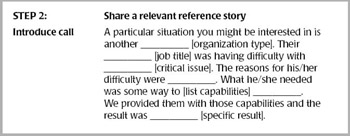
Figure 6.5: Introduce Call: Share a Relevant Reference Story
Transition to Getting Pain Admitted. This is a critical element and a transition point in your sales call. Ultimately, the key is to get your buyer to admit pain (see Figure 6.6).

Figure 6.6: Step 2, Introduce Call: Transition to Getting Pain Admitted
If the exact words from Figure 6.5 don’t quite fit you, use something similar. The story’s format is the important thing. It helps the buyer relate to someone similar to them with a similar problem, and then provides the punch line to end the story with quantifiable results. All this makes it possible for your buyer to open up and admit pain.
For a summary of Step 2, see Figure 6.7. It shows how you can build rapport, introduce your call, position your company, and tell a Reference Story.
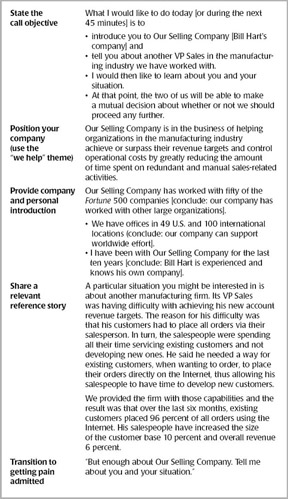
Figure 6.7: Step 2, Introduce Call: Summary Example
Step 3 Get Pain Admitted
By the end of Step 2, the buyer must decide whether to share information with the salesperson—specifically, whether to admit his or her pain. Be prepared for a number of potential responses when you say, “Tell me what’s happening with you and your company.” Depending on the answer, you must decide whether to stay or disengage.
Listen carefully to the buyer’s response. This is often difficult for salespeople to do. (I’m reminded of what my father said to me as a child: “God gave you two ears and one mouth; you should be listening twice as much as you are talking.”) Salespeople have a tendency to have their “happy ears” on: They want to hear good news. They want to make a sale, so they hear what they want to hear.
Five Possible Responses We’ve identified five responses you’ll probably hear from prospective buyers after you’ve told your Reference Story and said, “Enough about me, tell me what’s going on with you and your company.” Figure 6.8 is an example of how buyers can respond.
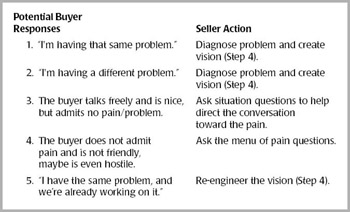
Figure 6.8: Potential Buyer Responses
In the first response, the prospective buyer says, “I’m having that same problem.” Bull’s-eye, a direct hit, a salesperson’s nirvana. Pain, the pain you hoped to hear, the one that you helped bring to the surface, is on the table, and a potential sales opportunity has begun. You should now proceed to diagnose the pain—something we call need development—and eventually create a vision of a solution.
In the second response, the prospective buyer says, “I’m having a different problem.” It’s not exactly what you want to hear, but it may be something you can help them with. The prospective buyer feels comfortable admitting his or her problems in this situation, and that’s a very good thing. Move on to need development and creating a vision of a solution.
In the third response, no pain or problem is admitted; still the buyer is friendly and talkative. This situation can lead to lots of discussions and maybe lots of follow-up meetings. Be careful not to fall into the trap of engaging in a situation where the pain is not compelling enough for them to change. The approach here is to get the conversation focused around a potential problem that you can address. Sometimes situation questions can help steer the buyer in this direction, for example, “Today, how do your customers get notified of new products or promotions?” or, “When a prospect calls a salesperson to ask a question, how is that call handled?” These types of questions can direct the conversation to capabilities you have that you know can help.
In the fourth and most dreaded response, no problems are admitted and the buyer is unfriendly. In this situation, you may have given it your best shot, and the prospective buyer still doesn’t admit any pain or problems. On top of that, the buyer is untalkative and may even be adversarial. Have you ever encountered this kind of situation? Most of us have, and we hate it.
Still, you’re a salesperson, and you have a job to do. To the extent possible, I recommend you try to engage in a conversation. Before you give up or leave, present a menu of pains that other people in that job typically have. After reciting that menu, ask, “Do you have any of those problems?” We call it a menu of pains because we’re almost inviting the buyer to pick one off the list. You have little to lose. Alternatively, try and discover company facts, such as who is managing what. Perhaps you can learn some useful information. You could still go back into the organization and try to get a sale going through another route.
Then there’s the fifth response: “I have that same problem, and we’re already working on it.” A direct hit to the center of the target. Or is it? There is danger in this situation, even though it sounds exciting at first. They have the problem you want to hear, but unfortunately, they’re already at vision—and you’re not the person who helped them develop that vision. Someone got there before you; it may even be an in-house solution. Be careful; remember the probability or winning percentages when you’re not in Column A. Here the task becomes vision re-engineering, which I discuss in Chapters Nine and Ten.
There is another way to view the five buyer responses and the possible salesperson actions (see Figure 6.9, on the opposing page).
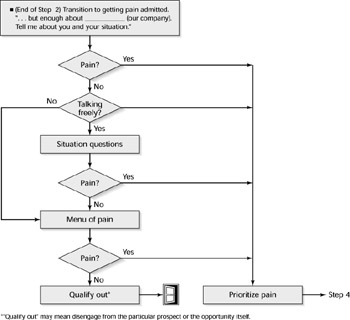
Figure 6.9: Getting Pain Admitted—Flowchart
What should we do with the pain or problems that the buyers admit to? After all, that’s what we were after. We can go on to Step 4, Need Development and Vision Creation. We can diagnose the pain and create a vision of a solution. How we do this is based on Solution Selling’s diagnostic model, called the 9 Block Vision Processing Model. Let’s take a look.
Part One - Solution Selling Concepts
Part Two - Creating New Opportunities
- Chapter Four Precall Planning and Research
- Chapter Five Stimulating Interest
- Chapter Six Defining Pain or Critical Business Issue
- Chapter Seven Diagnose Before You Prescribe
- Chapter Eight Creating Visions Biased to Your Solution
Part Three - Engaging in Active Opportunities
Part Four - Qualify, Control, Close
- Chapter Eleven Gaining Access to People with Power
- Chapter Twelve Controlling the Buying Process
- Chapter Thirteen Closing: Reaching Final Agreement
Part Five - Managing the Process
EAN: N/A
Pages: 106
